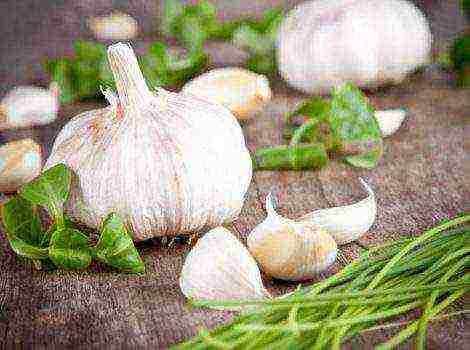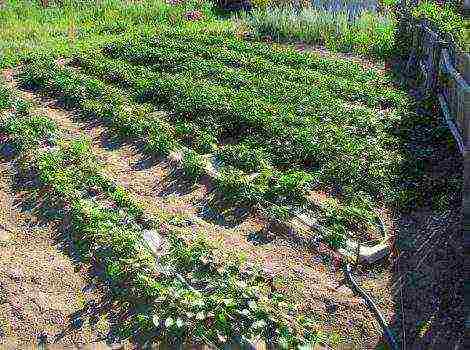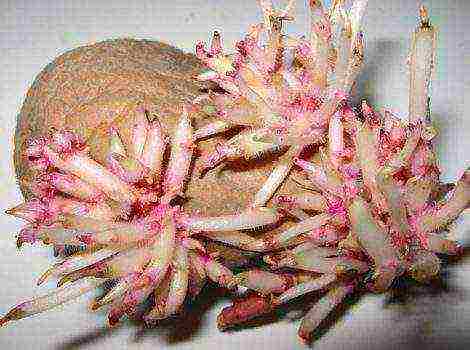Content
It is no coincidence that potatoes have become the most widespread horticultural crop in our country. It is successfully grown in both hot southern and cold northern climates, and yields a rich harvest.... However, even he becomes vulnerable if he has to share a bed of weeds. It is to combat them that herbicides are intended.
Herbicides are the collective name for chemicals used to kill pests. The scope of their application is very wide - from industrial construction to the purification of reservoirs. However, they are most fully used in agriculture.
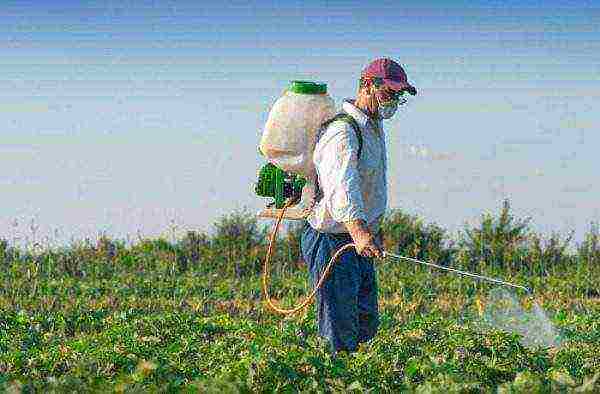
By the nature of damage to harmful vegetation, preparations are divided into two large subgroups:
- Internal action (systemic) - affect the entire weed plant.
- Outdoor action (contact) - are not absorbed by the root system of the weed plant, but they affect its aboveground part.
The effectiveness of various herbicides is also different. So, contact varieties, with rare exceptions, are used to combat annual pests. But for more complex root systems of perennial weeds, internal chemicals are indispensable - they are able to kill the whole plant, reduce soil overgrowth in the next season. Often, herbicides of different types are used together.
Views
The preparations also differ in the spectrum of the affected vegetation.... This is very important to consider when choosing chemicals, since an unsuitable agent is able to remove along with weeds and planting potatoes.
Continuous action
This type of herbicide is the most deadly, intended for the extermination of all types of plants in the treated area, without exception... Also in agriculture they are called general exterminating, they fully correspond to their formidable name.
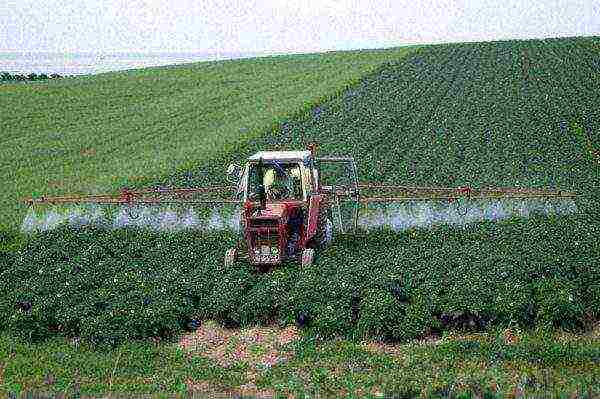
In agriculture, chemicals of this type have a rather narrow application - preparing virgin soil for planting, when it is necessary to remove all biological component from it, without exception. In the conditions of a garden and a vegetable garden, it is not easy for them to find applications, sometimes they are used to process beds in the off-season.
Selective action
In the overwhelming majority, weed poisoning refers to substances with a selective or selective spectrum of damage. They are poison only for some plant species, while remaining harmless for horticultural crops. In turn, they are also classified into two types:
- Widely selective - they fight certain types of flora, for example, all dicotyledonous plants, without touching monocotyledonous plants.
- Narrowly selective - not whole plant species are affected, but individual varieties within species; for example, Grodil fights the bedstraw, but does not touch its related barley and other grains.
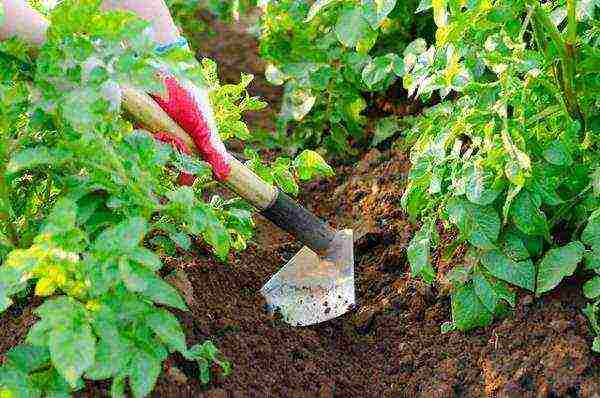
In fact, almost exclusively selective drugs are used in the home farm, and therefore we will pay special attention to them.
Pre-emergence
Also known as soil aids. Their operating principle is well understood from the name - it is necessary to process the soil itself. In addition to weed penetration, some pre-emergence chemicals leave a thin film on the ground.The defeat of pests occurs when their shoots come into contact with it.
Popular pre-germination products:
- Roundup - contains glyphosates; tillage occurs half a month before planting potatoes; shoots and roots of weeds are affected.
- Centurion - pre-emergence herbicide, used to control monocotyledonous weeds, for example, cereals; is saturated with cellodims, is absorbed by the root system of weeds, leading to the rapid wilting of sprouts.
- Boxer - effective against all types of pest flora, especially often used for breeding dicotyledons; its active ingredient is prosulfocarb.
-
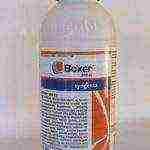
- Boxer
-

- Roundup
-

- Centurion
Postemergence
Also called leaf preparations, that is, affecting the upper, aerial parts of plants. Most of them use phosphates as an active substance.
Popular remedies used after germination:
- Shogun - it is used against cereal pests; saturated with propaquizafop, applied by spraying in the most active phase of the weed growing season - the formation of 4 leaves, the stem height is 10 cm.
- Alpha Mais - effective against dicotyledonous plants; destroys weeds within 3-10 days after tillage.
- Tornado 500 - saturated with glyphosates, poisonous for all types of dicotyledonous and monocotyledonous plants; the beneficial effect of the drug lasts up to 30 days, regardless of the weather.
-
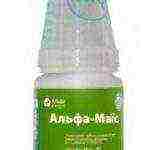
- Alpha Mais
-

- Tornado 500
-
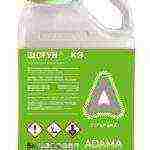
- Shogun
Post-emergence herbicide management is less demanding on the tillage process. So, in the case of their use, there are no strict requirements for compliance with the dosage. Even with a lower saturation of drugs per square meter of area, the beneficial effect occurs, but it is expressed not in the complete destruction of weeds, but in a decrease in their germination and the ability to form seeds.
The most popular potato herbicides
The modern market is extremely saturated with drugs of various effects. But even among the existing herbicides there are several that gardeners love most due to ease of use and efficiency. What drug to choose for processing potatoes?
Zenkor

Refers to selective herbicides, completely harmless for nightshades, carrots, potatoes. The chemical is based on the substance metribuzindecomposing in the soil no faster than 3 months after treatment. The use of Zenkora is especially beneficial for the control of broadleaf and cereal plants.
An important advantage of Zenkora is its saturation with an active substance - 600 g / l. In addition to damaging the germs, leaves after application a protective film on the surface of the garden... Works great in mixes as it is compatible with a wide range of insecticides and pesticides.
Titus

It has a selective effect, spraying should be done in the post-emergence period. The active ingredient is rimsulfuron, which blocks the process of acetolactosynthesis in the leaves. Equally effective against one and biennial plants... The first signs of weed death are noticeable after 3 days, and their complete death occurs no later than 15 days after treatment.
Titus is suitable for the preparation of tank mixtures, but incompatible with phosphorus insecticides. Very picky about humidity - with prolonged drought, the consumption of the chemical should be increased. May cause temporary yellowing of potato leaves. Not recommended for use on seed bushes.
Lapis lazuli
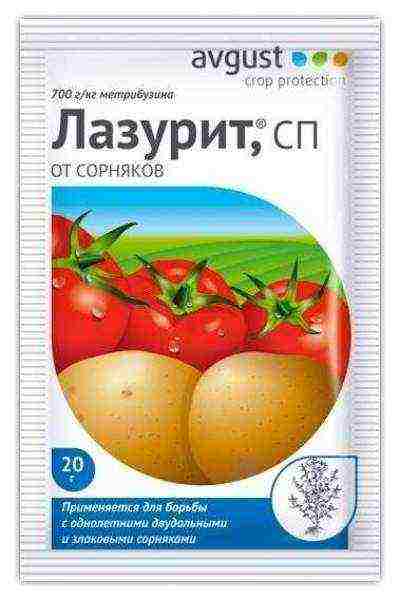
Lapis lazuli is a versatile tool used for both pre-emergence and post-emergence treatment of beds. By the principle of action, it resembles Zenkor - the main substance is also metribuzin (700 g / l).
One of the most powerful drugs, it is used strictly once a season, only in exceptional cases, double processing is allowed - before and after germination, when the sprouts of potatoes have reached a height of 10 cm or more. You should be very careful with Lapis Lazuli - contact with skin, mucous membranes, eyes or food is fraught with a deterioration in human well-being.
How are weed killers used?
The effectiveness of soil chemicals is extremely dependent on the gardener's compliance with a number of requirements for their use.:
- uniform soil structure - large lumps of earth are not welcome, which impede the uniform distribution of the substance over the surface;
- humidity - it is desirable to moisten the soil before applying herbicides;
- embedment depth - not deeper than 5 cm;
- type of soil - the activity of the preparations will be lower in fertile soils, the humus saturation of which exceeds 5%; preparations are more suitable for sandstones and other types of light soils;
- heat level - when the air temperature is less than 5 ° C, the performance is reduced.
The effect of herbicidal treatment of potatoes
The mechanism of action of different types of herbicides is not the same. It depends on their chemical composition and method of application. By the way the chemical manifests itself on plants, the following varieties can be distinguished:
- Destroy cell membranes - lead to drying of weed sprouts; the effect begins to appear immediately after treatment.
- Hormone replacement - the mechanism of action of benzoic or acidic herbicides; destroys the connections of leaf tissues; the effect is weakly manifested in relation to grain varieties of weeds.
- Suppression of photosynthesis - only against dicotyledonous weeds.
- Suppression of the ability of cells to divide - chemicals of this type belong to chloroacetamides; the action is gradual, at first the plant weakens, then dies.
- Suppression of amino acid synthesis - leads to stopping the development of the weed.
- Suppression of fat synthesis - immediate stop of development, drying of the plant within 15 days.
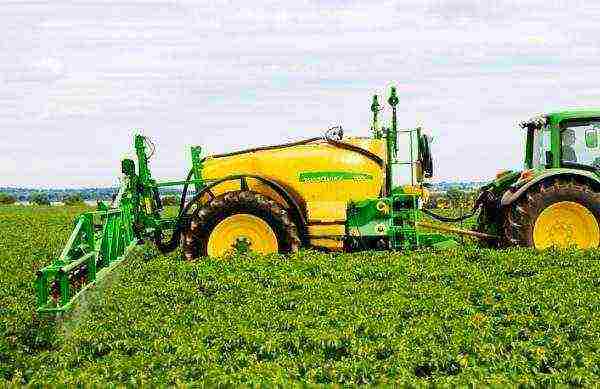
Unfortunately, the effect of the use of herbicides is partially manifested on potatoes, especially with incorrect dosage or processing procedure... To minimize it, you can supplement or partially replace the chemicals with less aggressive substances.
Other products in addition to herbicides
Herbicides are not able to provide complete protection against all misfortunes. Depending on the threat, the treatment of potatoes and other crops can be carried out with preparations of the following type:
- Fungicides - to combat fungal spores.
- Insecticides - chemicals that kill parasitic insects.
- Acaricides - against mite infestation of plants.
- Bactericides - prevent the growth of microorganisms.
- Nematocides - against nematode worms.
- Folk remedies - from kerosene to copper sulfate.
Finally, hand weeding is a conventional analogue of chemicals. But even with the most careful removal of weeds, the effect will not be comparable to that after treatment with special means. That's why herbicides remain in demand among gardenerswho have a rich harvest as their priority.
